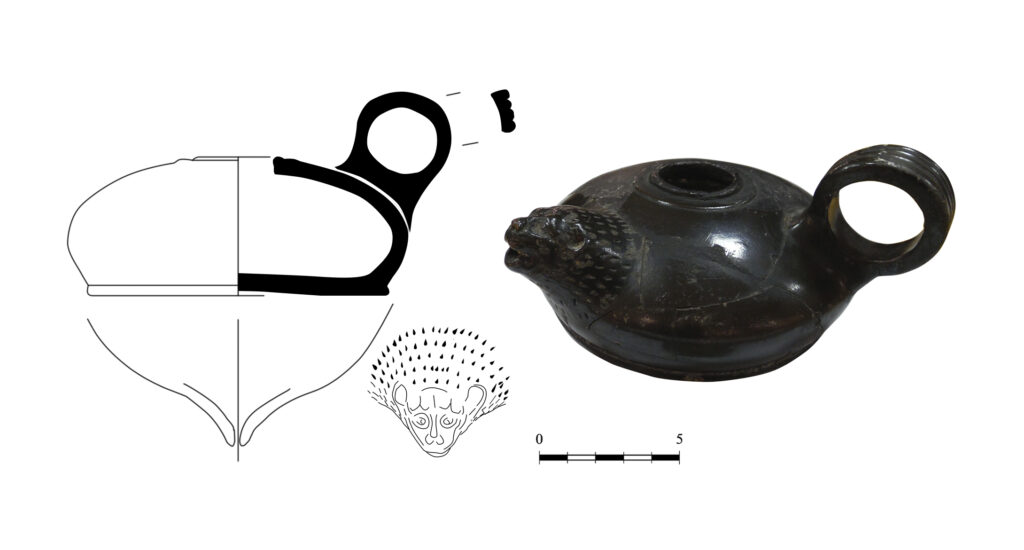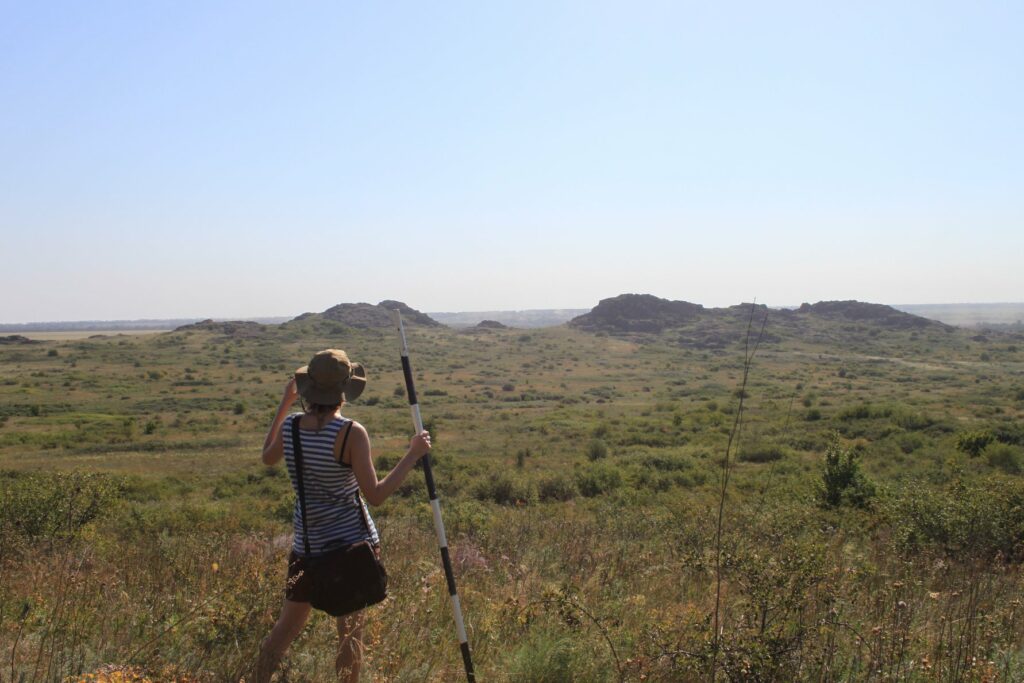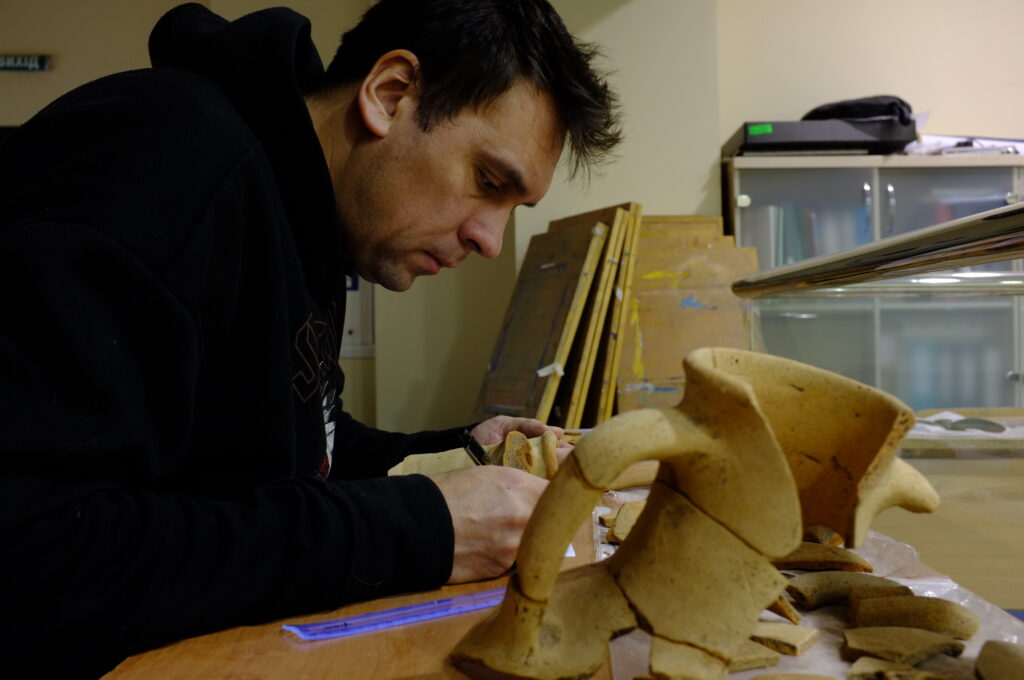Last week we provided a brief insight into the rich archaeological heritage of Ukraine. We presented the Mezhyrich site and the other Palaeolithic settlements with houses made of mammoth bones, which are one of the many archaeological highlights under acute threat of destruction by the war. Our scholarship holder Diana Dudnyk, who is a PhD student at the Institute of Archaeology of the National Academy of Sciences of Ukraine, deals with the oldest archaeological remains documented and analyzed within the framework of the 2023 DAI fellowships for Ukrainian scholars. In this post, Diana Dudnyk presents her project idea and current work on the lithic tool production at Mezhyrich and other Epigravettian sites in the Mid Dnieper basin.
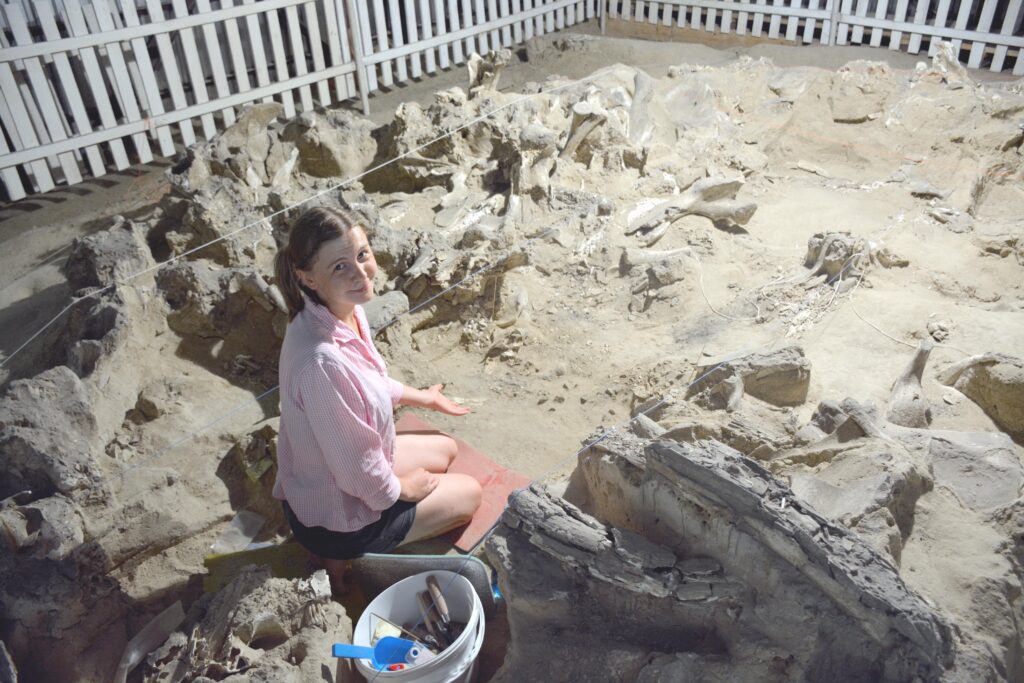
The main idea of my research project is to reveal the features of Epigravettian lithic technology of the Mid-Dnieper basin: Mezyn and Mezhyrich assemblages. Recently, we investigated the Barmaky lithic assemblage and found out two discrete core reduction strategies (Chabai/Dudnyk 2022). Also, the Mezyn and Barmaky assemblages are identified as Mezyn industry. The Mezhyrich industry is represented by such sites as Mezhyrich, Dobranychivka, Gintsi, Fastiv, Buzhanka, Semenivka 1, 2, and 3 (Nuzhnyi 2015).
The first stage of my research project is devoted to studying the Mezhyrich lithic assemblage.
Mezhyrich is an open-air camp site dated between 18.2 and 17.4 ka cal BP. The site is enclosed in loess deposits and situated on a cape formed by the valleys of the Ros and Rosava Rivers about 12 km west from the Dnieper River (Kaniv District, Cherkasy Region). The settlement consists of four household units represented by concentrations of objects used for different purposes and a mammoth bone dwelling in the center. Mezhyrich is one of the few Palaeolithic sites in Ukraine with remains of mammoth dwellings. Also, dwellings made of mammoth bones have been discovered in Dobranichyvka, Mezyn, and Gintsy, of these only the Mezyn site has been fully excavated (Shovkoplyas 1965)
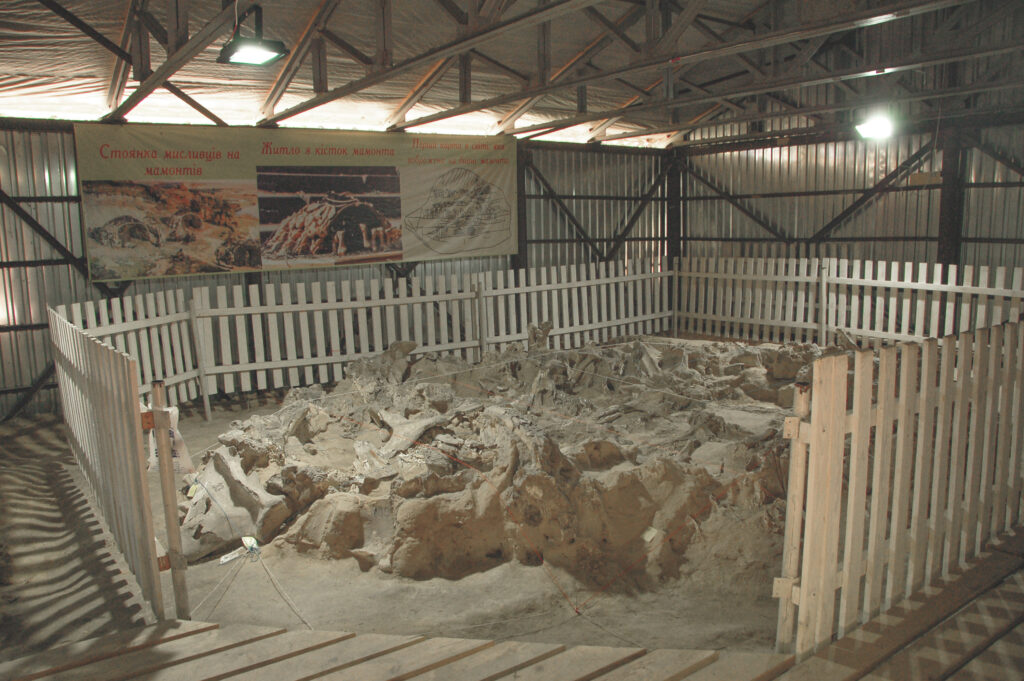
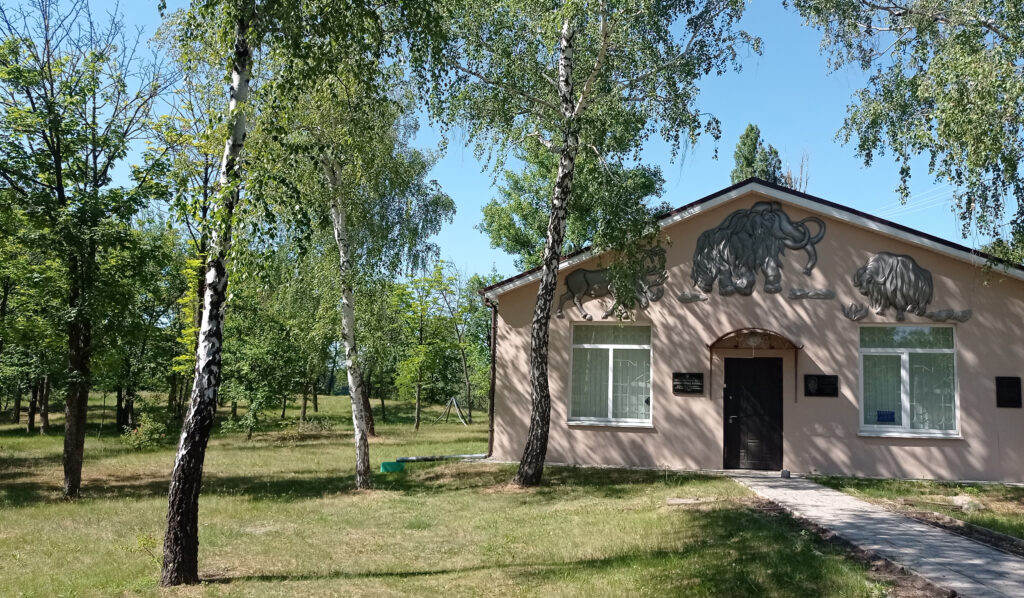
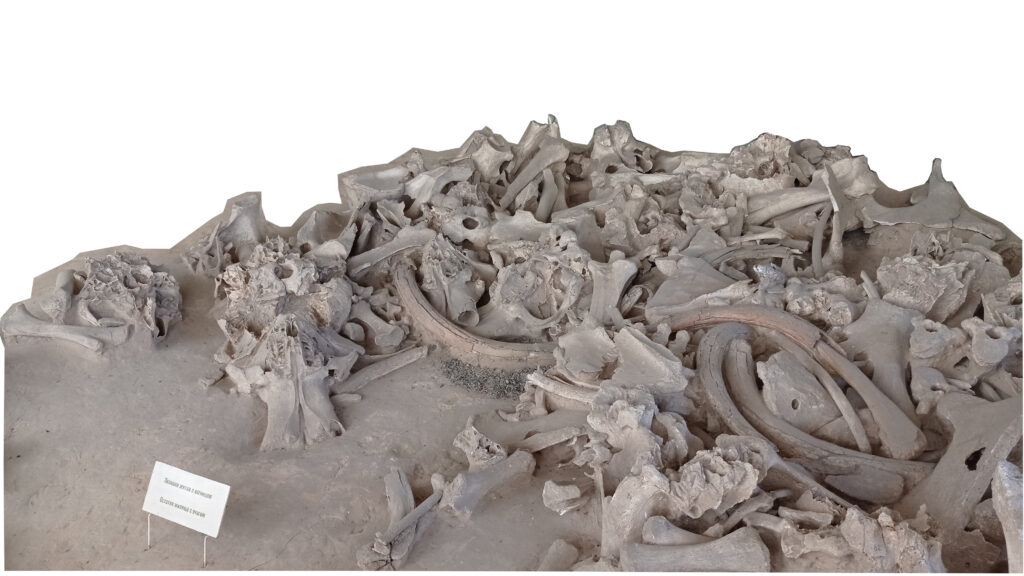
Already by the excavations of Dwelling 4 (Fig. 2) it was decided to turn the site into a museum. However, such a museum has not yet been established (see Samoilenko/Shydlovskyi 2016). The only museum with remains of a Palaeolithic dwelling in situ is in Dobranichyvka (Figs. 3–4). Nevertheless, our archaeologists have actualized this problem and held an international archaeology summer school in 2018 aimed to conserve dwelling bones in Mezhyrich using modern methods (more details here)
Due to Russia’s invasion of the territory of Ukraine, we have temporarily lost the opportunity to invite leading European specialists and their students to explore this outstanding heritage together. Despite Mezhyrich has been studied for more than half a century (for history of research see Dudnyk 2017), its potential for exploring the life of ancient people at this place has not yet been exhausted (Shydlovskyi et al 2018; Tsvirkun et al. 2021).
With my research project “The core reduction strategies of the Epigravettian industries of the Mid Dnieper basin” I have resumed work at the lithic technology of Mezhyrich. At the moment I am studying the assemblage of core-like pieces and lamellar debitage. To analyze the technological and typological features of the stone artifacts of the Mezhyrich site, a configuration was developed for recording data using the Entrer 4 program. Core-like pieces and lamellar debitage have been recorded in separate databases. Artifacts have been measured with a Mitutoyo electronic caliper to the nearest hundredth of a millimeter. The recorded parameters reflect the features of an artifact which allows me to make technological and typological reconstructions (Fig. 5). Qualitative parameters include class, condition, axis, shape, lateral and distal profiles, cross-section, dorsal scar pattern, presence of crust, and its percentage, striking platform, presence of overhang trimming, abrasion, bulb, lip, and angle of splitting. Quantitative features include width, thickness of the striking platform in mm, length, width, and thickness of the artefact in mm.
As a result, the recorded database will be used to reveal continuous or discrete core reduction strategies. The obtained data are planned to be published.
Also, the next stage of my research will be devoted to the Mezyn lithic assemblage.
Diana Dudnyk
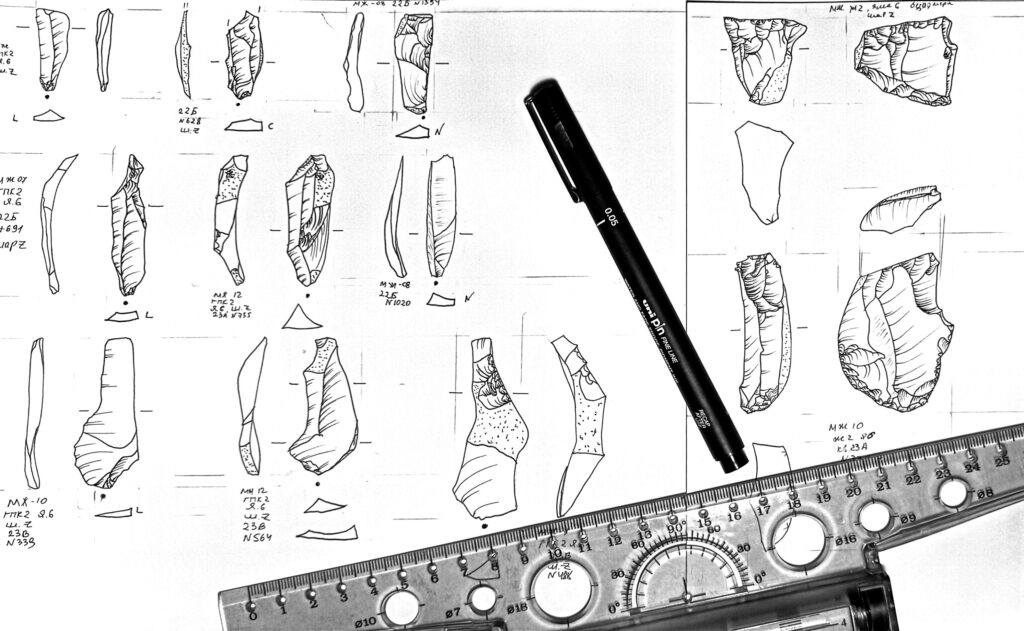
References
Chabai/Dudnyk 2022: V.P. Chabai/D.V. Dudnyk, The Barmaky, Level 2 Epigravettian assemblage: the core reduction strategies. Археологія і давня історія України 4 (45), 2022, 33–57.
Dudnyk 2017: Д.В. Дудник, Етапи дослідження Межиріцької стоянки. Vita Antiqua 9, 2017, 69–80. https://doi.org/10.37098/VA-2017-9-69-80.
Nuzhnyi 2015: Д. Ю. Нужний, Верхній палеоліт Західної і Північної України (Київ 2015).
Samoilenko/Shydlovskyi 2016: Л. Самойленко/П.Шидловський, Межиріцька стоянка: яке майбутнє в нашого минулого? Вісник Київського національного університету імені Тараса Шевченка. Історія 4 (131), 2016, 62–69. https://doi.org/10.5281/zenodo.1206223.
Shovkoplyas 1965: И.Г. Шовкопляс, Мезинская стоянка (Киев 1965).
Shydlovskyi et al. 2018: P. Shydlovskyi/S.Péan/L. Crépin/O. Tsvirkun, Investigating a prehistoric mammoth bone dwelling: from field and lab research to education. Quaternary Perspectives, 25 (2), 2018, 18–19. doi:10.5281/zenodo.2631382.
Tsvirkun et al. 2021: O.I. Tsvirkun/P. S. Shydlovskyi/ D. V. Dudnyk/ M. V. Chymyrys, Lithiс processing complex of the fourth dwelling of the Mezhyrich Upper Palaeolithic settlement. Vita Antiqua, 13, 2021, 56–86. https://doi.org/10.37098/VA-2021-13-55-86 (in Ukrainian).
